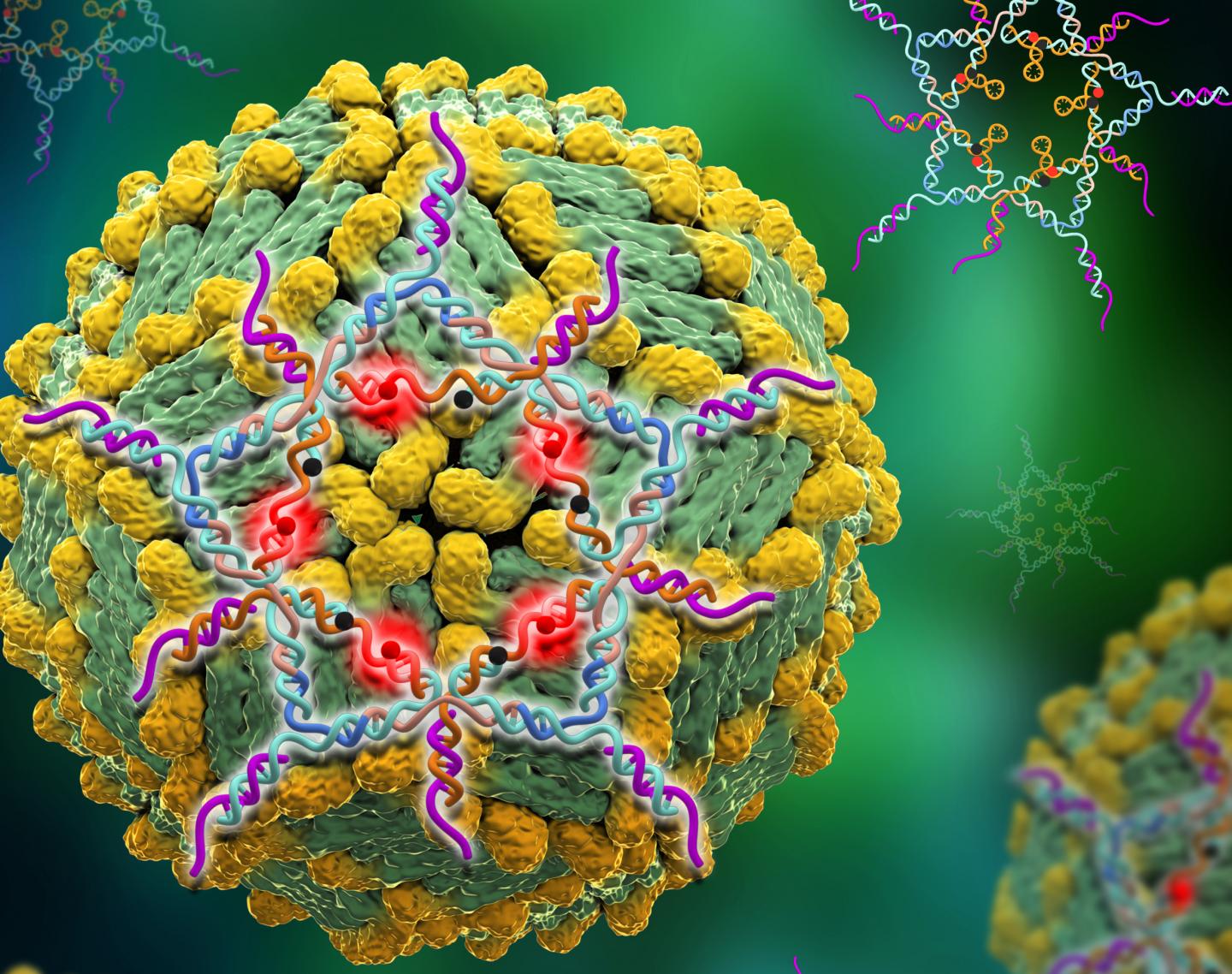November 25, 2019 -- Researchers from Rensselear Polytechnic Institute have developed a new approach to trap the dengue virus, a close relative to the Zika virus, in the bloodstream using innovative nanotechnology. The technique was published in Nature Chemistry on November 25.
The dengue virus has a complex geometric pattern that prevents typical ligands from binding tightly. Protection against viruses has traditionally involved the use of neutralizing antibodies against target epitopes on the viral surface. Previous synthetic scaffolds such as polymers, dendrimers, or other nanoparticles have shown some improvements in toxicity with other viruses. These particles must be non-toxic to the host and biologically stable.
Star power
The research team has developed a star-shaped DNA scaffold with the ability to directly target the dengue virus. The structure was designed to multivalently arrange ligands in a 2D pattern mirroring the complex spatial distribution of dengue epitopes with nanometer precision. The "DNA star" provided the best match between points on the DNA shape and latch points on the virus.

"You could overlay the star onto the virus and target a whole hemisphere of the sphere precisely," said Xing Wang, the corresponding author of the study, an assistant professor of chemistry and member of the Center for Biotechnology and Interdisciplinary Studies (CBIS) at Rensselaer Polytechnic Institute, now at the University of Illinois at Urbana-Champaign. "All the ligands that would target the antigens of this virus would overlay perfectly with a DNA star. If we were only able to make a connection in one place it would be a weak binder, but with ten aptamers connecting the virus to the star, we have a tight hold on the target."
Diagnostic power
Moreover, the hybridization of fluorophore and quencher molecules to the scaffold turned it into a viral sensor. In the absence of the dengue virus, these molecules form a hairpin structure, quenching fluorescent resonance energy transfer until they interact with the virus, at which time the domains unzip the hairpins into single-stranded DNA, and produce a fluorescent readout. The researchers validated that this approach provided superior sensitivity, compared to traditional diagnostic tools, such as ELISA assay.
"This is more sensitive than any other way of detecting Dengue, beating the clinical test by more than 100 fold," said Wang. "The binding is tight and the specificity is high, enabling us to distinguish the presence of Dengue on the first day of infection."
"This is the first time people have used DNA nanostructure this way, but the technology is broad, and we can expect to see it used in many other applications," said Robert Linhardt chemist at Rensselaer.
The team also validated the nanoparticle's ability to inhibit the virus in vitro by measuring infectivity of human serum by a plaque reduction assay. To elucidate the mechanism by which the nanoparticle inhibits infection, the researchers used confocal imaging to determine that virions were electrostatically repelled from cells.
"This transformative development combines a novel strategy with emerging technology for medical solutions that have eluded more conventional approaches. It's exactly the kind of research that the inter-disciplinary environment at CBIS is designed to enable and is an excellent example of the caliber of work we are producing," said Deepak Vashishth, director of the CBIS.
Do you have a unique perspective on your research related to virology? Contact the editor today to learn more.
Copyright © 2019 scienceboard.net






